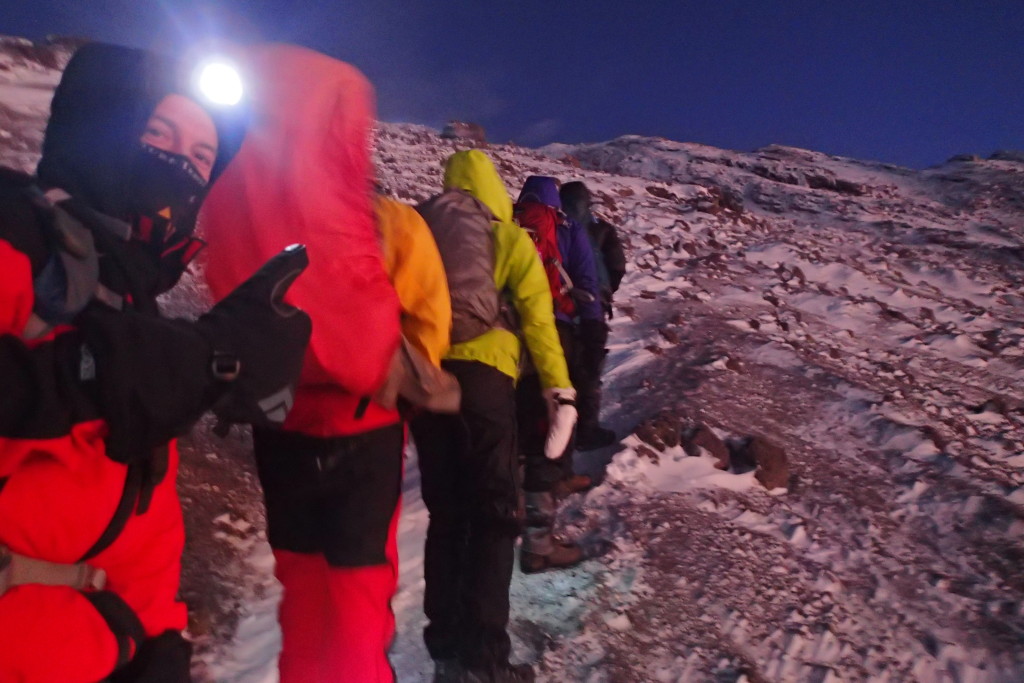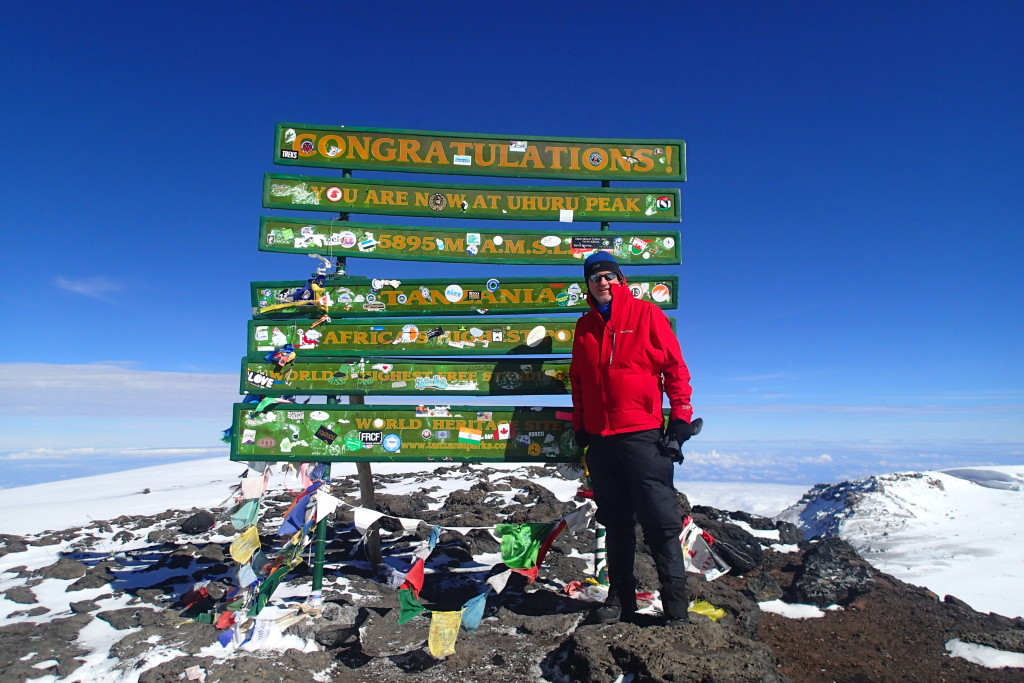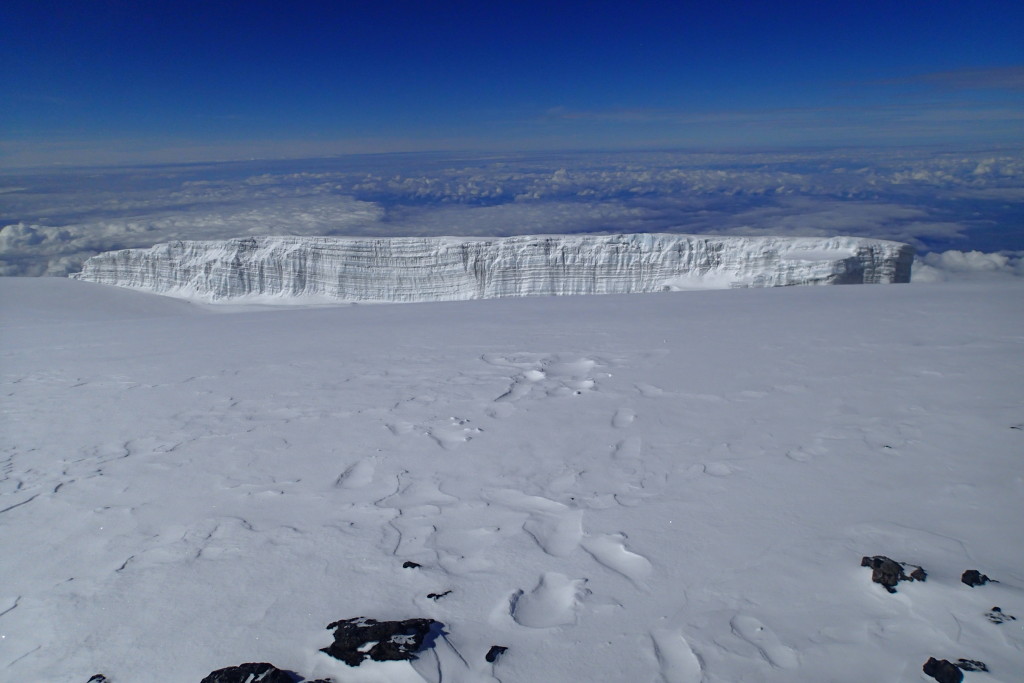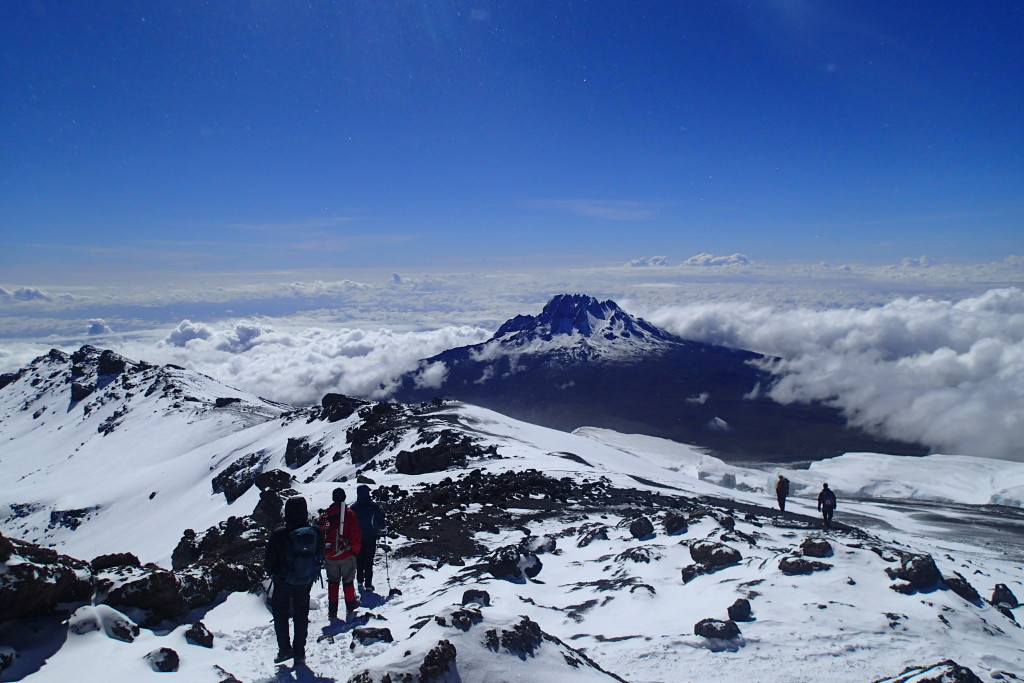Day 8 – Summit Day – Barafu Camp (15,331 ft) to Uhuru Point (19,341 ft) to Mweka Camp (10,065 ft)
The Climb
The push for the summit (one map calls this the ‘assault trail’) is made overnight. Reasons offered are that the footing is more stable when everything is colder at night, the sunrise at Stella Point is spectacular, and that the scheduling works better to make it down to a relatively low altitude later that same day.
The team was split into 4 groups for the climb to the summit leaving at half hour intervals, with the idea that we would all catch up near the summit. I was assigned to the last group which was my preference as we’d be a little warmer going faster.
After getting several hours of sleep, more than I expected, I awoke around midnight and realized that the snow that had started around dinner had intensified and we were now in a storm. We dressed and headed for the mess tent to meet with our group. On the way, I encountered the group ahead of us on the way out, shuffling slowly into the storm and darkness with their headlamps lighting the way. After some tea and cookies, and an equipment check, we set out a little before 1:30am.
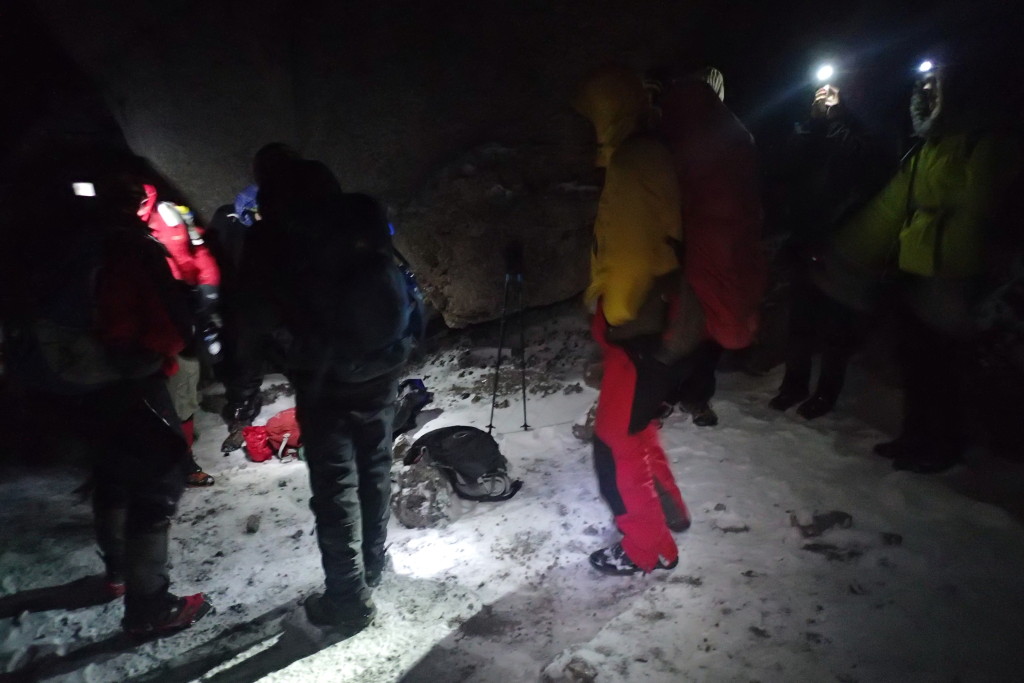
A brief stop on on the climb to the summit.
The climb started out over rocks up a steep ridge before turning into hours of zig-zagging in the snow covered scree. I think we all zoned out a bit here. We stopped occasionally for a short rest break or when one of our group was having trouble, but for the most part it was just head down climbing through the night. Looking above us, we could see the lines of headlamps on the three other groups in our team progressing up the mountain.
I had some food with me, but didn’t eat much of it. I probably should have eaten more. Fortunately, I was able to keep my water tube from freezing by forcing air back into the tube each time I drank. It was difficult though at that altitude, just breathing and moving forward was difficult enough.
At one point we stopped and our lead guide called another guide forward to stand at the side before we proceeded. As I passed, I realized that he was standing near the edge of the cliff beside the ridge to ensure none of us went over.
As it started to get light I was mesmerized by the surroundings. The steep slope, covered in snow, was eerie, and turning around we started to see the summit of Mawenzi peak, one of the three poking through the clouds below us.
At one point a couple of climbers with a guide passed us coming down. They had stopped short of the peak, deeming it unsafe to continue. I thought I recognized them as the climbers I had talked to at Karanga camp, and this was confirmed later. I was sorry to see them turn, but talking to them later at Mweka Camp it was clearly the right call for them.
Finally, shortly after daybreak, we reached Stella Point, on the rim of the crater. At this point some climbers were having difficulty, displaying the incoherence that is a sign of severe altitude sickness. It was clear to me later that they didn’t realize how badly affected they were. Several were warned that it wasn’t safe to continue to Uhuru Point farther up. Fortunately Stella Point is considered to be a point on the summit by the Parks Commission, so everyone who made Stella Point was acknowledged for reaching the summit.
After a break and consultation, the rest of us set out for Uhuru Point on the highest point of the crater rim. It was a far more gentle slope, but in the cold and thin air still a challenge. It struck me later in the day that I have very little sense of how long it took to get to Uhuru Point and its iconic sign.
Once at Uhuru we could stop, celebrate our accomplishment and look around. I distinctly remember wanting to get my hand on the sign, that was my personal confirmation that I’d succeeded.
We stayed on the peak for about 20-30 minutes, it’s hard to say now. I realized later that I was a little out of it up there, but I was still able to savour the accomplishment and take in the stunning views of the crater, glaciers and the cloud cover far below.
The Descent
Once we were finished at the summit we donned our packs and headed back down.
The perspective changes heading downhill, and you enjoy the view much more. There’s no more looking at the mountain in front of your face. From Uhuru Point back to Stella Point was an easy walk during which we could see the enormous Rebmann glacier off to the right hand side and admire the cloud layer far below. It is without a doubt the most spectacular scenery I’m ever likely to see.
Once we hit Stella Point and headed down the steeper side of the summit, the going became harder. Sliding down the scree was not as much fun as advertised. With a covering of snow it was slippery and treacherous, and I found myself having to stop often to catch my breath. Once past the scree, we were climbing down through steep rock fields.
It was a long, challenging climb back to Barafu camp, where we had a meal before continuing down. Some distance below the Barafu camp the Mweka route splits off from the Machame route. Used only for descent, the Mweka trail was initially quite easy but soon became a difficult challenge, a rocky gully which appeared to be a streambed but was apparently fashioned as a trail by a contractor. After hours of difficult climbing, we reached Mweka camp late in the afternoon.

